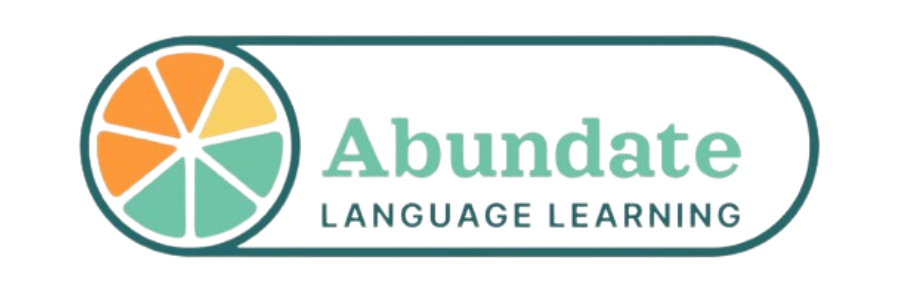The neuroscience of learning and habits
Over the past few months, I've been immersing myself in both the theory and practice of language learning: What it means to teach, what it means to learn, ways of learning, language learning methods, and conditions for optimal learning. Though I set up this website in May, the perfectionist in me has felt too self-conscious to publish much on my blog so far. Now it's time to take a deep breath and hope that my experiences might help or inspire someone, or at the very least give myself a way to stay accountable and reflective in my learning.
My main takeaways so far have been in the psychology and neuroscience that underlies learning - and in fact much of the human experience:
1. Maslow was wrong
Most of us are familiar with Abraham Maslow's pyramid proposing a hierarchy of the needs of humans. The hierarchy gives a prediction of which needs are given top priority when they're not met, and looks something like this:
Primary needs
1. The most "basic" needs which supposedly trump all others include food, sex, warmth, and sleep: Physiological needs which support homeostasis.
2. Physical safety.
Psychological / social needs
3. Love needs: Belonging, love, intimacy and friendship.
4. Esteem needs: Feelings of accomplishment, prestige and self-esteem.
Self-actualisation
5. Creativity, transcendence, and reaching one's full potential.
Maslow's model has been tweaked and at times contested since he first published it in 1943, but only recently have we been able to see evidence of just how different this model is from most people's reality.
David Rock, a big name in coaching known for his SCARF model of social needs, shows that social needs are actually near the bottom of Maslow’s pyramid, at least on a level with physical safety. In fact, the brain treats "social pain" very similarly to physical pain. If you feel a loss of status, certainty, or autonomy, or a lack of relatedness or fairness (the 5 elements of SCARF), then your brain responds by activating the same pain circuit as if you were physically hurt. To take the need for relatedness as an example: The way your brain reacts to your “hurt feelings”, say, if your friend failed to include you in a social event, is very similar to if you had injured a limb.
So social needs are actually primary needs.
Though it may sound shocking, we shouldn't be surprised: After all, forming social ties and being able to work together is an important survival tool for social beings like us humans. (Other animals are a topic for another day).
2. Learning is conditional
The first thing you should know about learning is that sustainable, effective learning only happens when you're happy. Sure, anecdotally you might say you learn from mistakes, and that you can learn from bad experiences, but if you want to learn a lot of new material, the best "learning mode" seems to be a happy one. More specifically, the best state for learning and productivity is a non-threatened one. This is because once the brain identifies a (social or physical) threat, the emotional limbic system takes over and our rational, thinking, learning, creative prefrontal cortex and hippocampi are left starved for resources. David Rock argues that performance reviews are a terrible idea for this reason: Simply hearing the phrase "Can I give you some feedback?" is easily interpreted as a threat to your status, and if that threat response kicks in, you're unlikely to be in a responsive, learning mood.
I’m currently in my third week of a language coaching course called Neurolanguage CoachingⓇ. In our classes, we're encouraged to give only positive feedback to one another to facilitate each other's learning. Learners assess and correct only their own performance. I was initially sceptical to this - surely constructive criticism is an important part of learning and making progress? After the first two weeks, and from seeing some of the scientific evidence behind it, however, I can see that perhaps positive-only feedback could be effective. By not “threatening” the social needs of our coursemates, we are boosting each other’s learning. But I'm still not convinced at how universally it applies to other contexts.
Another condition to effective learning is the breaking down of misconceptions. It takes a learner a significant amount of time, energy, and genuine motivation to learn something that contradicts an existing belief. An obvious and somewhat extreme example is the idea that the Earth is flat, which despite massive amounts of evidence against it, some people still believe today. We all have false or incomplete mental maps of the things we think we know. We draw conclusions from our own assumptions about natural phenomena ("a big falling object will accelerate faster than a small falling object"), draw incorrect comparisons between processes ("plants breathe CO2"), or learn misconceptions from others ("I'm too old to change my habits"). Whenever we learn something new, we may reject the information if it contradicts something we already "know".
That being said, there are ways of "unlearning" misconceptions and replacing them with new, more accurate ones. According to the book "The Science of Learning", misconceptions can be replaced if the learner is
1) explicitly aware of their current belief
2) able to understand an "acceptable alternative" to this belief
3) able to discover flaws in the prior belief
I find this personally interesting because I tend to be pretty stubborn, and like the human I am, I tend to prefer a familiar but flawed belief over a novel but reasonable one. I once ended up in an argument with my brother, standing at the zenith of a 100-meter-tall bridge with one “Pooh stick” each, convinced my stick would reach the ground faster because it was bigger than his. Though I am aware of the reason for my flawed logic (step 1 to unlearning above) I still haven’t quite grasped the physics of it (step 2), so that must be why I occasionally draw the wrong conclusions about how exactly gravity works. I suppose I should be grateful that I’m wrong because this mass/gravity relationship is probably what helps planes stay in the air.
3. Our habits literally shape our brain
"Neurons that fire together wire together". I remember this catchphrase from my psychology degree, but only recently have I begun to realise the massive implications of this phenomenon.
Holloways were created from thousands of journeys along one path (Image from Wikipedia). In a similar way, repeated actions create and strengthen neural pathways in the brain to form habits.
Our habits are essentially neural circuits - strings and webs of neurons connected to each other - that have become stronger with repeated practice. The way holloways were at some point in time thick forest, gradually refined and entrenched through years of continued traffic, habits were once new, awkward, haphazard connections of nerve endings that, with practice, have become familiar, automatic and expertly performed processes. So, congratulations. If you are above the age of about seven and have functioning limbs, you are most likely an expert walker, tooth-brusher, food-eater, and word-sayer (I won't say we are all expert speakers, because that's another thing entirely).
Creating a new habit, of course, requires doing new things, and this might be the equivalent of scrambling through dense undergrowth the first few times you do it: Slow, uncomfortable, and energy-consuming. But it can also involve a sense of adventure and achievement. And after a few repetitions, new “mental holloways” - new neural pathways - start to form in your brain. Neurons that fire together wire together. A new neural pathway can be created by as little as three repetitions, though for most of us I suspect it takes a little more than that to solidify the pattern and make it a habit.
The first day of the rest of your life
Knowing what you now know about learning and habits, perhaps you, like me, have a newfound faith in the ability of every one of us to shape our brains (and our lives) how we want to. All it takes is the right conditions and some focus.
Today is the first day of the rest of your life. If you start a new tiny habit today, can you imagine the difference it will make over time? Probably not.
FURTHER LEARNING
If you're interested in learning more about learning, in addition to David Rock's work (e.g. his book "Your Brain at Work" or a talk where he presents his SCARF model of social needs), "The Science of Learning" seems to be legally available as a free ebook from TeachPsych.org. For the historically inclined, you can even read Abraham Maslow’s original 1943 paper here: [PDF download].
AUTHOR'S BIO
Hedvig is a language and learning coach on a mission to make language learning almost as normal as breathing. She is the founder of Abundate.org and host of the Abundate Podcast, where she interviews language learners, educators and researchers about the magic, power and beauty of language learning. She also shares her personal reflections on language learning in her newsletter. Learn more about private coaching in English or Norwegian, or her group programme for learners of any language.

